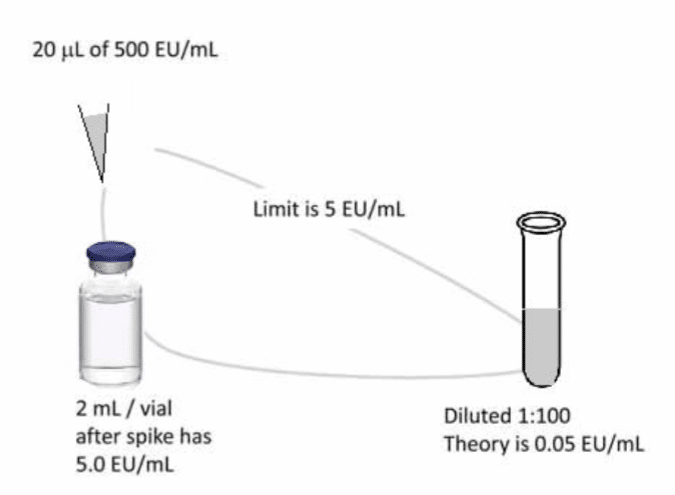Sommaire
- Quality Metrics: Why do manufacturers not support the FDA initiative anymore?
- Nouvelle réglementation pour dispositifs médicaux : les défis expliqués.
- Les avancées des Procédés de Hautes Pressions Hydrostatiques (HHP) dans l’obtention d’une assurance de stérilité de 10-6 : Principes & Applications pratiques
- Traitement par le peroxyde d’hydrogène vaporisé : de la décontamination à la Stérilisation ?
- Essais d’intégrité des contenants (CCIT) pour les systèmes « Single Use »
- Les nouvelles exigences des bonnes pratiques de fabrication européennes concernant la Validation du Nettoyage
- Endotoxin masking hold-time study parameter determination and performance
- Optimiser vos systèmes Qualité en changeant de paradigme : placer l’opérateur au centre des systèmes
The US Food and Drug Administration (FDA) and the European Medicines Agency (EMA) have requested hold-time studies to determine the presence of what has been called “low endotoxin recovery’ (LER) for submission with biologic license applications (BLA). Recommendations for performing endotoxin masking hold-time studies are described here.

The 4 parameters to be discussed include a) Drug formulations; b) Spike type and amount; c) Timing and temperature of hold; d) Methodology; e) Container effects; f) Test kinetics; g) Test interpretation; h) Implications; and i) an example protocol. The parameters discussed constitute a recommended initial screen, which can be made more specific to match more closely specific process parameters if masking is determined to occur.
a) Formulation
Regulators charged with approving BLAs have defined LER-subjected formulations as those containing polysorbate (20 or 80). Typically, formulations also contain a chelator such as a citrate or phosphate buffer and, in some cases, histidine has been implicated. Some companies have included biologic therapeutic protein solutions that do not contain polysorbate in hold time studies because the masking effect, regardless of the mechanism, can obscure the ability to determine endotoxin either as bound to protein or as per the specific LER mechanism. Most recently, it has been found that LER can occur from the upstream use of a different detergent, Triton-X100, in protein extraction without the occurrence of polysorbate in downstream formulations (Schwarz et al.).
Protein binding has been known for decades, yet the systematic exclusion of its presence in analytical testing seems neglected (never garnered the attention that LER has received). From the Petsch et al studies performed 20 years ago, in which researchers used model proteins including IgG (the prototypical structure for monoclonal antibodies) and showed that recovery of endotoxin in low protein concentrations (1mg/mL) and pH neutral solutions (pH7) gave almost complete binding of endotoxin by the protein (<2% recovery by LAL test). After protease (proteinase K) treatment, the recovery was just under 90%. Protease treatments are difficult to perform and often commercial proteases are contaminated with low levels of endotoxin. The demasking scheme developed by Hyglos has been shown to work for protein-bound endotoxin detection as well as for LER solutions.
b) Spike
The endotoxin type used for spiking has been subject to debate by industry participants, with some maintaining that LER only occurs with purified lipopolysaccharide. Hyglos has shown repeatedly that various “naturally occurring endotoxins” (NOE) are masked under LER conditions but also clearly some specific bacterial LPSs are not very susceptible to LER (the mechanism for this is being explored). Of course, one cannot predict what the source of contamination would be. Those that want to use NOE, however, must choose an NOE that is subject to the masking phenomenon, otherwise there is no reason to perform such a study (if the spike doesn’t respond to masking). The choice of reference standard endotoxin (RSE) gives the user an advantage in that different LAL types can be explored relatively easily should the need arise. One can also choose control standard endotoxin (CSE) in the desire to stick to a routinely preferred LAL. The spike volume should be minimized to avoid changing the concentration of the undiluted drug product. Typically, a 10 microliter spike of a stock solution 100 times the endotoxin limit concentration per 1ml of product will suffice. The spike concentration chosen should be close to the drug limit concentration and at least 10 times higher than the detection limit after dilution. See Figure 1 for an example product spike. LAL reagent water controls should accompany initial spikes to serve as the baseline for spike recovery. A masking control is recommended to ensure that masking conditions have been met.

c) Timing and temperature
Since the initial screen surveys generic conditions, the recommendation to use room temperature masking and an interval out to 14 days is based on regulatory observations. For temperature, a manufacturing process step is rarely exclusively refrigerated. Any process has a beginning time and an ending time (such as product lling which is not performed in a refrigerator), in which the product sits unrefrigerated. Time at room temperature has a profound effect on masking protein solutions. Similarly, in choosing a short masking study (seven days), one may later learn that sometimes the process can be extended. One does not want to repeat hold time studies due to an initial estimation that later proves to be a borderline assumption. And, after all, a 14 days screen is just two additional time points compared to a 7 days screen (day 10 and day 14).
d) Methodology
The test is performed by either the straightforward linear or “chronological’ method, which is performed by spiking and testing samples as time points arise, or by the “reverse’ spike method which seeks to reduce test variability by ensuring that all samples end up tested on the same test plate at time zero. An example protocol is included in Table 1 for a reverse study.
e) Container effects
If using the original container, as has been recommended by regulatory agencies, container effects are automatically accounted for in the masking study. In some cases, it may be difficult to use the original container, including vials or syringes with a lack of headspace or the lack of an adequate opening to allow pipetting of sample in and out. However, if using a secondary container, one should be aware of differences in recovery that can occur due to glass. Some pretesting may be useful to ensure that the study is about the drug product and not the container itself.
f) Test kinetics
Testing for masking kinetics is an examination of the recovery values over time. A decline after an initial adequate recovery is typical for LER studies, and the rapidity of the decline indicates the masking capability of the solution. One can feel confident of the effect when the kinetics are occurring within the first couple of days or even the first couple of hours after spike. Figure 2 shows typical kinetic graphs for recovery over time of spike into undiluted product. Note that both the LER-subjected endotoxin as well as the protein-bound endotoxin quickly disappear, but the reduction over time may level o with protein binding, whereas the classical LER mechanism will go to completion (none detected)

g) Test interpretation
LER is just what it says: low endotoxin recovery. “Low” is defined as less than 50% for two consecutive time point recoveries over the course of the study. Sample spike recoveries can be compared to either theoretical expectations or recovery relative to water control spikes. Theoretical recoveries should be used only when water control recoveries are within the acceptable range.
h) Implications
The implications of endotoxin masking seem obvious in that LAL testing of masked samples gives little assurance of detection of endotoxin arising from potential contamination events in LER prone process solutions. As a general rule, anything existing in a protein therapeutic that is not found in the natural protein in its natural environment (human blood) is a contaminant, as it could be viewed as such by the immune system by pattern recognition receptors (PRRs) including Toll Like Receptors (TLRs). Certainly, endotoxin even as disaggregated and masked with polysorbate would qualify as a substance that doesn’t exist naturally in the blood stream. If it is not particularly pyrogenic, it may still stimulate adaptive immunity via cell surface marker activation (Schwarz). This fairly simple idea of control has governed all efforts to date to reduce immunogenicity, including exclusion of both infectious mimetics (aggregates, particulates, emulsions) and actual microbial PAMPs (LPS, viral and bacterial nucleic acids, bacterial proteins such as agellin etc.).

Efforts to remove anything that can be seen as non-self, infectious (PAMP artifacts including LPS), or infectious mimetic currently includes a growing list:
- Replacement of foreign sequences in drug molecule design (humanization)
- Prevention of protein aggregates
- Preclusion of visible and subvisible particulates
- Removal of host cell nucleic acids and proteins (from CHO, yeast, E. coli, etc.)
- Endotoxin (forms include: aggregated, disaggregated, masked, and detoxified -as the adjuvant MPLA is used to provoke the immune system without having proinflammatory properties (see Ca- sella and Mitchell)
- ß-glucans (also not proinflammatory have been found to stimulate the adaptive immune system). See Gefroh et al, and Vigor et al.
- Product containers and closures (including leachables and extractables such as coatings like sili- cone, etc).

Kevin L. WILLIAMS – Hyglos GmbH BIOMERIEUX COMPANY
kevin.williams@biomerieux.com
Partager l’article
Acronymes
BLA – Biological License Application
CHO – Chinese Hamster Ovary cells
CSE – Control Standard Endotoxin
LAL – Limulus Amebocyte Lysate
LER – Low Endotoxin Recovery
LPS – endotoxin, Lipopolysaccharide
NOE – Naturally Occurring Endotoxin
PAMP – Pathogen Associated Molecular Pattern
PRR – Pattern Recognition Receptor
RSE – Reference Standard Endotoxin
TLR – Toll-Like Receptor
Références
– Petsch D, Deckwer, and Anspach, Proteinase K digestion of proteins improves detection of bacterial endotoxins by the Limulus amebocyte lysate assay: application for endotoxin removal from cationic Proteins, Anal Biochem.1998, May 15;259(1):42-7.
– Schwarz et al., Biological Activity of Masked Endotoxin, Nature Scientific Reports | 7:44750 | DOI: 10.1038/srep44750
– Casella CR, Mitchell TC., Putting endotoxin to work for us: Monophosphoryl lipid A as a safe and effective vaccine adjuvant, Cell Mol Life Sci.2008 Oct;65(20):3231-40.
– Gefroh et al, Multipronged approach to managing beta-glucan contaminants in the downstream process: control of raw materials and ltrationwith charge-modified nylon 6,6 membrane lters, Biotechnol Prog. 2013 May-Jun;29(3):672-80. doi: 10.1002/btpr.1718. Epub 2013 Apr 18.
– Vigor K., et al., Development of downstream processing to minimize beta-glucan impurities in GMP-manufactured therapeutic antibodies,Biotechnol Prog. 2016 Nov;32(6):1494-1502. doi: 10.1002/btpr.2359. Epub 2016 Oct 21.
– Verthelyi D. and Wang V., Trace Levels of Innate Immune Response Modulating Impurities (IIRMIs) Synergize to Break Tolerance to TherapeuticProteins, FDA. 2010. http://journals.plos.org/plosone/article?id=10.1371/journal.pone.0015252
– Haile LA, Puig M, Kelley-Barker L, Verthelyi D., Detection of Innate Immune Response Modulating Impurities in Therapeutic Proteins, FDA. 2015.http://journals.plos.org/plosone/article?id=10.1371/journal.pone.0125078
– 2014 FDA Guidance Document: Immunogenicity Assessment for Therapeutic Protein Products (Section 5, page 18: Impurities with adjuvant




